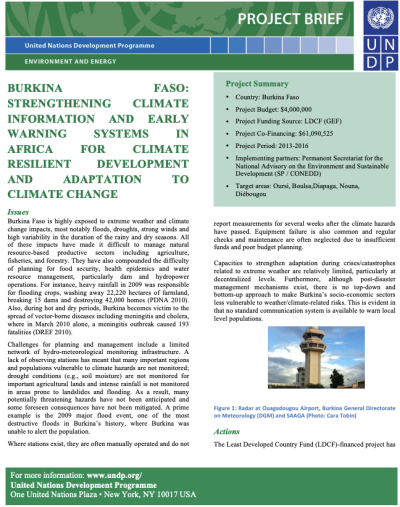
Burkina Faso is highly exposed to extreme weather and climate change impacts, most notably floods, droughts, strong winds and high variability in the duration of the rainy and dry seasons. All of these impacts have made it difficult to manage natural resource-based productive sectors including agriculture, fisheries, and forestry. They have also compounded the difficulty of planning for food security, health epidemics and water resource management, particularly dam and hydropower operations. For instance, heavy rainfall in 2009 was responsible for flooding crops, washing away 22,220 hectares of farmland, breaking 15 dams and destroying 42,000 homes (PDNA 2010). Also, during hot and dry periods, Burkina becomes victim to the spread of vector-borne diseases including meningitis and cholera, where in March 2010 alone, a meningitis outbreak caused 193 fatalities (DREF 2010).
Challenges for planning and management include a limited network of hydro-meteorological monitoring infrastructure. A lack of observing stations has meant that many important regions and populations vulnerable to climate hazards are not monitored; drought conditions (e.g., soil moisture) are not monitored for important agricultural lands and intense rainfall is not monitored in areas prone to landslides and flooding. As a result, many potentially threatening hazards have not been anticipated and some foreseen consequences have not been mitigated. A prime example is the 2009 major flood event, one of the most destructive floods in Burkina’s history, where Burkina was unable to alert the population.
For the full report, please click download below.
